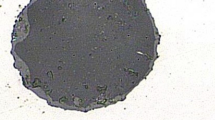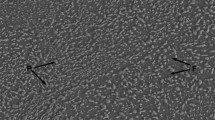A structural steel (grade 40KhGM) with improved machinability was studied. The steel contains an increased amount of sulfur and was modified with calcium during metallurgical production stage. A qualitative analysis of the size of nonmetallic inclusions present in the studied steel was performed in comparison with conventional steel (40KhGMA) with low sulfur and calcium contents. A dilatometric study was carried out to compare the specifics of supercooled austenite transformation and hardenability of steel with improved machinability and standard steels. The corresponding continuous cooling transformation (CCT) diagrams of austenite transformations were plotted. The dependencies of the mechanical properties of the studied steels with various impurity contents on the tempering temperature have been established. According to the results, calcium-treated steel with improved machinability is characterized by a similar set of mechanical properties as conventional low-sulfur steels. This implies that the steel with improved machinability can be successfully used for the production of critical and high-strength parts using automated lines and machines.









Similar content being viewed by others
References
N. E. Luiz and Á. R. Machado, “Development trends and review of free-machining steels,” J. Eng. Manuf., 222, 347–360 (2008).
ASM Handbook, Properties and Selection: Irons, Steels, and High-performance Alloys, Vol. 1, ASM Intern. (1990).
M. L. H. Wise and R. Milovic, “Ranges of application of free-cutting steels and recommended tool materials,” Mater. Sci. Tech., No. 4, 933–943 (1988).
N. Ånmark and T. Björk, “Effects of the composition of Ca-rich inclusions on tool wear mechanisms during the hard-turning of steels for transmission components,” Wear, 368-369, 173–182 (2016).
N. Ånmark, A. Karasev, and P. G. Jönsson, “The effect of different non-metallic inclusions on the machinability of steels,” Materials, No. 8, 751–783 (2015).
Y.-N. Wang, J. Yang, and Y.-P. Bao, “Effects of non-metallic inclusions on machinability of free-cutting steels investigated by nano-indentation measurements,” Met. Mater. Trans. A, 46, 281–292 (2015).
N. Ånmark, T. Björk, A. Ganea, P. Ölund, S. Hogmark, A. Karasev, and P. Göran Jönsson, “The effect of inclusion composition on tool wear in hard part turning using PCBN cutting tools,” Wear, 334–335, 13–22 (2015).
A. Larsson and S. Ruppi, “Structure and composition of built-up layers on coated tools during turning of Ca-treated steel,” Mater. Sci. Eng. A, 313, 160–169 (2001).
A. L. V. da Costa e Silva, “The effects of non-metallic inclusions on properties relevant to the performance of steel in structural and mechanical applications,” J. Mater. Res. Tech., 8(2), 2408–2422 (2019).
H. Yashiki and T. Okanek, “Effects of Mn and S on the grain growth and texture in cold rolled 0.5% Si steel,” ISIJ Intern., 30 (4), 325–330 (1990).
J. Maciejewski, “The effects of sulfide inclusions on mechanical properties and failures of steel components,” J. Fail. Anal. Prev., No. 15, 169–178 (2015).
R. V. Väinölä, L. E. K. Holappa, and P. H. J. Karvonen, “Modern steelmaking technology for special steels,” J. Mater. Proc. Tech., 53(1-20), 453–465 (1995).
X. Li, X. Long, L. Wang, S. Tong, X. Wang, Y. Zhang, and Y. Li, “Inclusion characteristics in 95CrMo steels with different calcium and sulfur contents,” Materials, No. 13, 619–632 (2020).
Y. Kusano, Y. Kawauchi, M. Wajima, K. Sugawara, M. Yoshida, and H. Hayashi, “Calcium treatment technologies for special steel bars and wire rods,” ISIJ Intern., 36, S77–S80 (1996).
N. Ånmark, A. Karasev, and P. G. Jönsson, “The influence of microstructure and non-metallic inclusions on the machinability of clean steels,” Steel Res. Intern., 88, 1600111 (2017).
P. Juvonen, Effects of non-Metallic Inclusions on Fatigue Properties of Calcium Treated Steels, Dissertation for the degree of Dr Sci. in Technology, Helsinki University of Technology, Espoo (2004).
W. Yang, L. Zhang, X. Wang, Y. Ren, X. Liu, and Q. Shan, “Characteristics of inclusions in low carbon Al-killed steel during ladle furnace refining and calcium treatment,” ISIJ Intern., 53, 1401–1410 (2013).
M. A. Ryzhkov and A. A. Popov, “Methodological aspects of plotting of thermokinetic diagrams of transformation of supercooled austenite in low-alloy steels,” Met. Sci. Heat Treat., 52, 612–616 (2011).
T. A. Kop, J. Sietsma, and S. Van Der Zwaag, “Dilatometric analysis of phase transformations in hypo-eutectoid steels,” J. Mater. Sci., 36, 519–526 (2001).
Technical Handbook of Bar Products, Atlas Specialty Metals, Australia (2005).
Acknowledgement
This study was sponsored by Resolution No. 211 of the Government of the Russian Federation (contract No. 02.A03.21.0006) as part of the state assignment of the Ministry of Education and Science of the Russian Federation (project No. 11.1465.2014/K).
Author information
Authors and Affiliations
Corresponding author
Additional information
Translated from Metallurg, Vol. 66, No. 4, pp. 37–44, April, 2022. Russian DOI https://doi.org/10.52351/00260827_2022_04_37.
Rights and permissions
Springer Nature or its licensor holds exclusive rights to this article under a publishing agreement with the author(s) or other rightsholder(s); author self-archiving of the accepted manuscript version of this article is solely governed by the terms of such publishing agreement and applicable law.
About this article
Cite this article
Maisuradze, M.V., Björk, T. Microstructure and Mechanical Properties of High-Strength Steel with Improved Machinability. Metallurgist 66, 391–402 (2022). https://doi.org/10.1007/s11015-022-01341-y
Received:
Revised:
Accepted:
Published:
Issue Date:
DOI: https://doi.org/10.1007/s11015-022-01341-y




